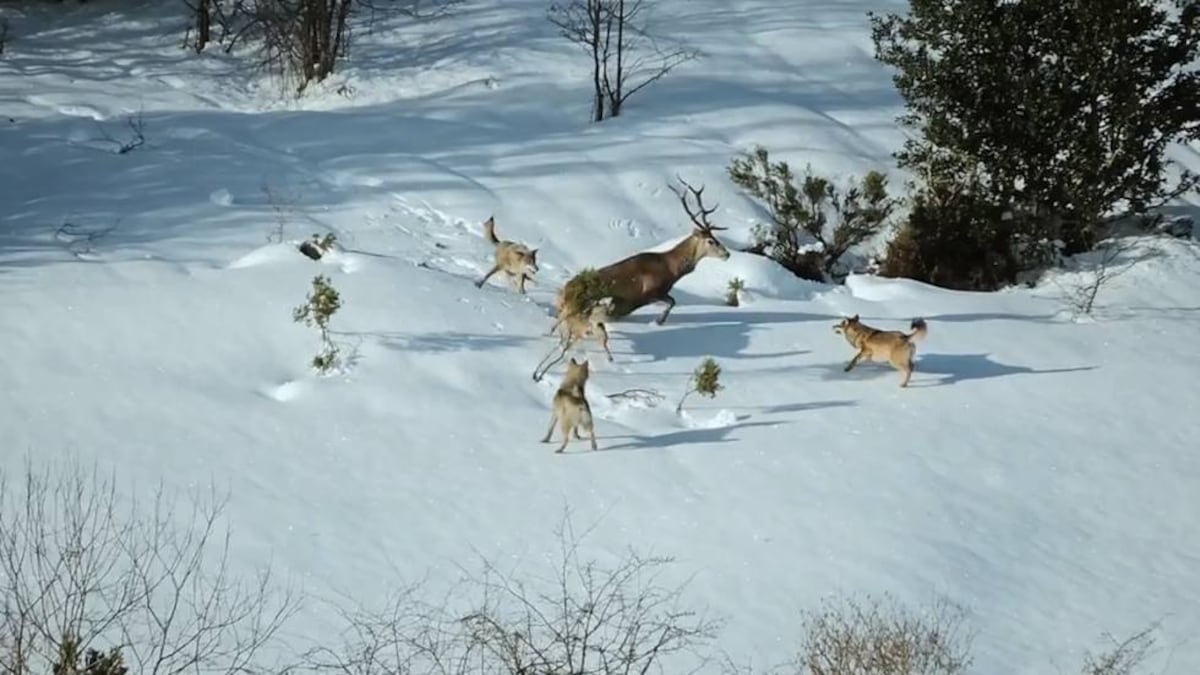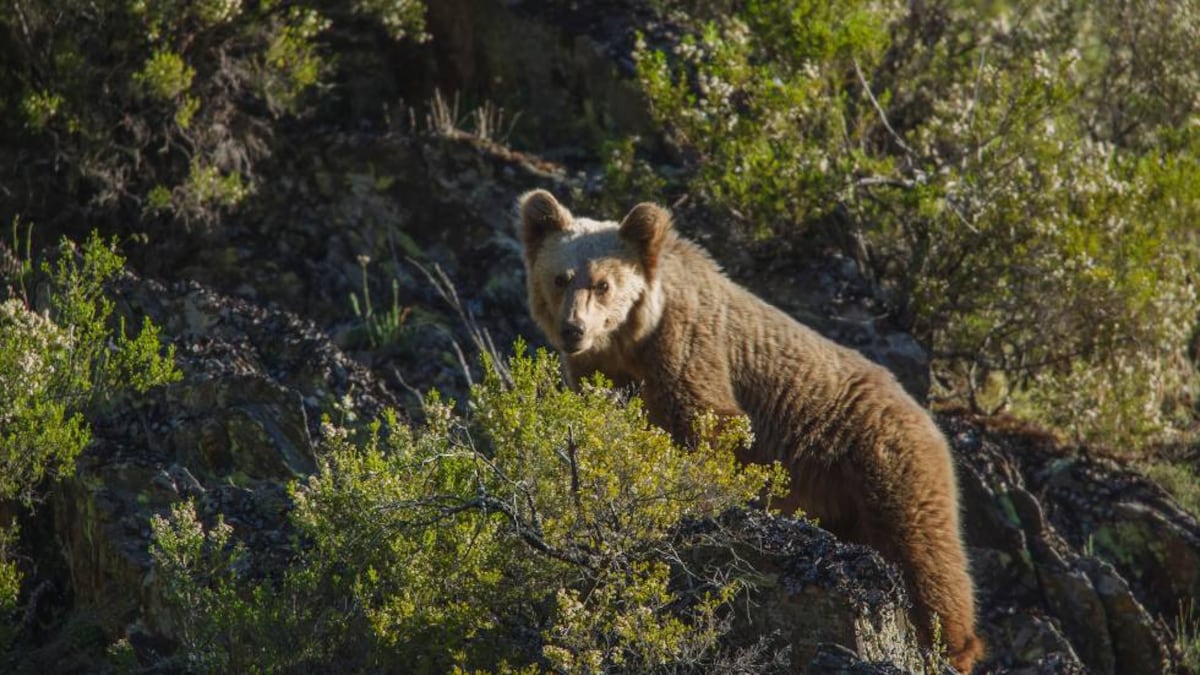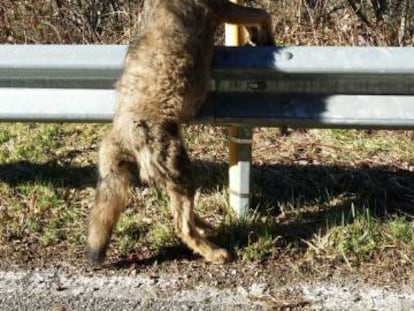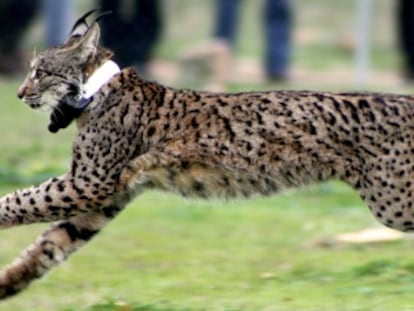Film crew captures first-ever footage of wild Iberian wolves hunting
Scene just one of many stunning sequences in new Spanish nature documentary ¡®Cant¨¢brico¡¯
In a world-first, a Spanish film crew has managed to shoot footage of a pack of wild Iberian wolves during a hunt. The scene, part of the soon-to-be released nature documentary Cant¨¢brico, shows six animals pursuing a majestic deer across hard snow in the northern Spanish region of Asturias.
After a chase lasting more than two minutes, the leader of the pack takes down its prey and the other members of the group begin to eat the animal alive.
When it comes to protecting the environment, what you don¡¯t know about, you won¡¯t look after Joaqu¨ªn Guti¨¦rrez Acha, director of Cant¨¢brico
¡°The scene with the deer is a gift from nature: it¡¯s almost impossible to film something like that,¡± says Spanish naturalist Joaqu¨ªn Guti¨¦rrez Acha, the director of the documentary which is set for nationwide release in Spain on March 31.
Guti¨¦rrez Acha and his colleagues spent two years holed up in some of the most remote corners of the Spain¡¯s Cantabrian Mountains to make the film but won¡¯t reveal the exact location of the wolf hunt.
¡°If we said [where it happened], there would be rifles the next day,¡± he explains, referring to a recent spate of macabre public displays of dead wolves in northern Spain. The director doesn¡¯t know if any of the animals killed in the film appeared in his movie: there are currently 70 packs in the Cantabrian Range.
But the wolf hunt is not the only surprise in Cant¨¢brico, which was shot in the regions of Castilla y Le¨®n, Cantabria and Asturias.
Using ultra high-definition cameras, drones, and equipment capable of capturing up to 1,500 frames a second, the crew managed to film two brown bears copulating and the birth of a venomous Vipera seoanei viper. Other sequences recorded for posterity include those of carnivorous plants devouring wasps and ants deploying chemical warfare against the largest woodpecker in Europe.
The scene with the deer is a gift from nature: it¡¯s almost impossible to film something like that Joaqu¨ªn Guti¨¦rrez Acha, director of Cant¨¢brico
For one of the most stunning sections of the documentary, the crew used?a specially fitted-out helicopter to film a group of Ibex traversing snowy peaks.
But the film¡¯s seasoned director warns that some of the footage in the documentary is ¡°unrepeatable¡± in the forests of the Cantabrian Mountains ¨C such as the presence of five Cantabrian capercaillies in the same shot. Loss of habitat means there are only 200 to 300 males left in the entire range.
¡°When it comes to protecting the environment, there¡¯s a golden rule: what you don¡¯t know about, you won¡¯t look after,¡± says Guti¨¦rrez Acha, who has worked with National Geographic and the BBC and whose 2013 film Guadalquivir is considered one of the most important nature documentaries ever shot in Spain.
¡°Cant¨¢brico is a wake-up call. This exists. If nothing is done, all species will go the way of the Cantabrian capercaillie,¡± he says.
English version by George Mills.
Tu suscripci¨®n se est¨¢ usando en otro dispositivo
?Quieres a?adir otro usuario a tu suscripci¨®n?
Si contin¨²as leyendo en este dispositivo, no se podr¨¢ leer en el otro.
FlechaTu suscripci¨®n se est¨¢ usando en otro dispositivo y solo puedes acceder a EL PA?S desde un dispositivo a la vez.
Si quieres compartir tu cuenta, cambia tu suscripci¨®n a la modalidad Premium, as¨ª podr¨¢s a?adir otro usuario. Cada uno acceder¨¢ con su propia cuenta de email, lo que os permitir¨¢ personalizar vuestra experiencia en EL PA?S.
?Tienes una suscripci¨®n de empresa? Accede aqu¨ª para contratar m¨¢s cuentas.
En el caso de no saber qui¨¦n est¨¢ usando tu cuenta, te recomendamos cambiar tu contrase?a aqu¨ª.
Si decides continuar compartiendo tu cuenta, este mensaje se mostrar¨¢ en tu dispositivo y en el de la otra persona que est¨¢ usando tu cuenta de forma indefinida, afectando a tu experiencia de lectura. Puedes consultar aqu¨ª los t¨¦rminos y condiciones de la suscripci¨®n digital.













































